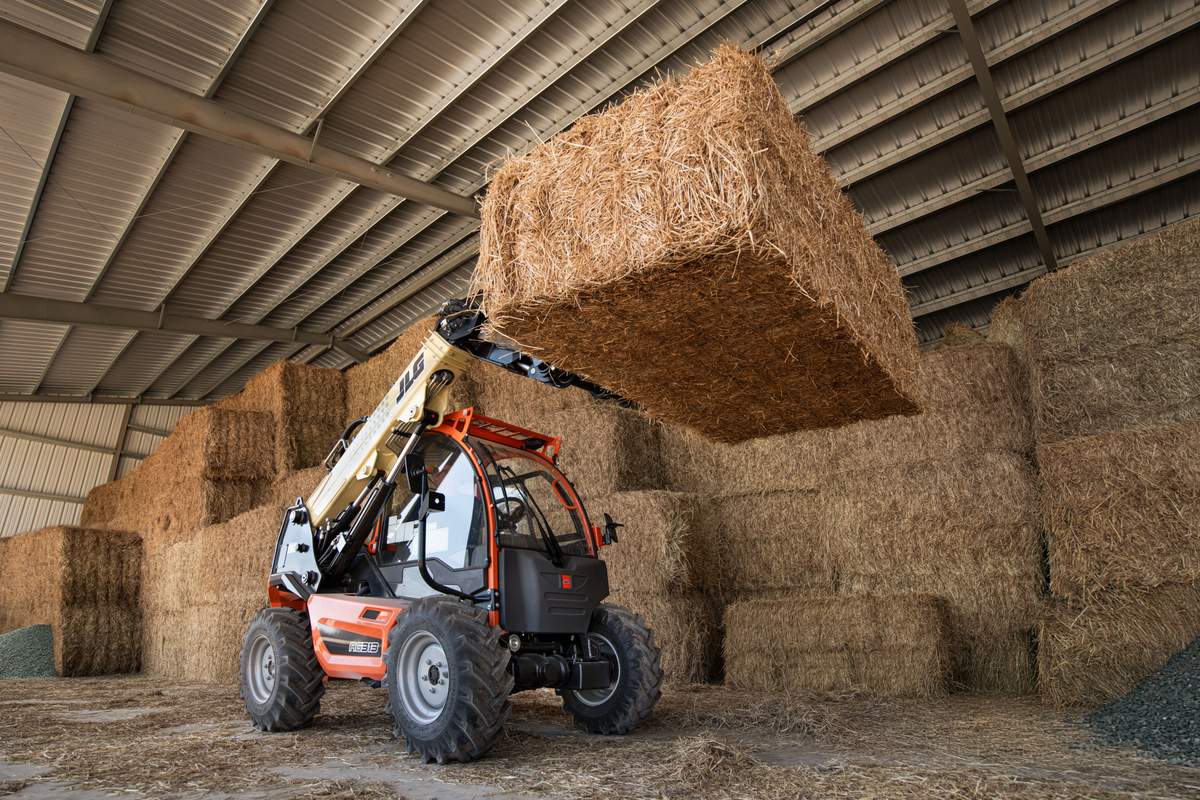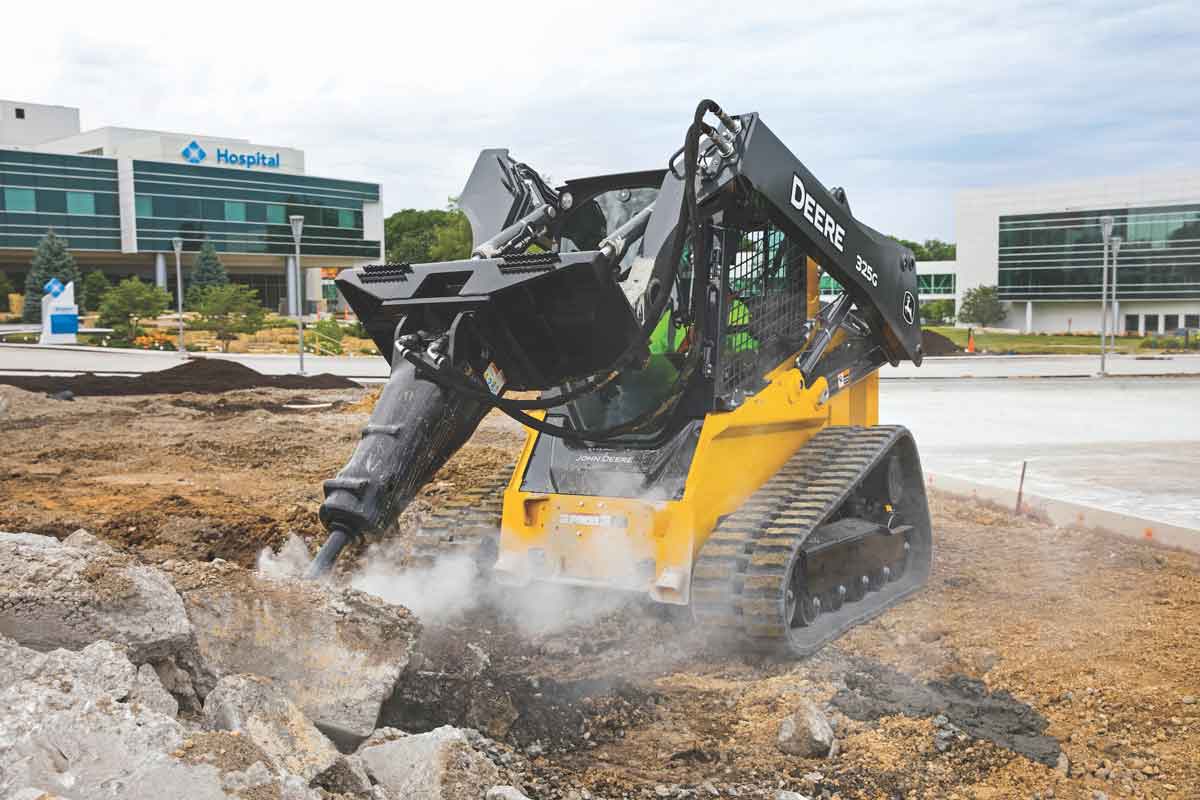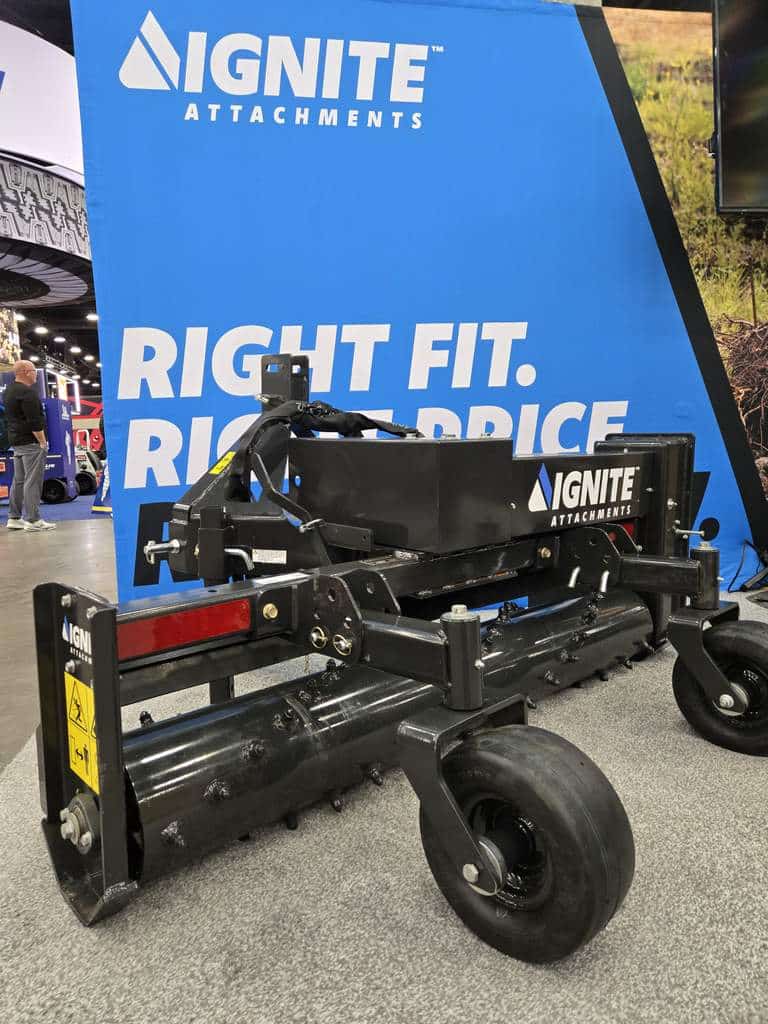Telehandler Attachments: We Talk Types and Maintenance

Compact telehandlers offer advantages and opportunities that traditional skid steer loader machines do not. There are also challenges to consider and overcome when selecting a compact telehandler and the attachment system that is available.
Powered Attachments
Compact telehandlers offer a variety of powered attachments such as carriages, buckets, grapples and more. Carriages (pallet forks) are by far the most popular attachment in use on compact telehandlers. With hydraulic features added, the carriage can perform and provide positioning of the load to suit the end-user’s needs. The side-tilt carriage can position the load properly for transport across uneven terrain and can also pick or place loads that are not on a level surface. Fork positioning carriages provide a powered means to situate the forks at the correct spread for palletized loads without the operator leaving the cab. Side-shifting carriages will shift the entire carriage and fork in either direction. This is useful if positioning the machine side to side is not possible when picking up a load or if lateral placement of the load is necessary.
Buckets and grapples are powered attachments which are generally used for loading loose material. A powered grapple bucket is helpful for non-uniform loads that are awkward to capture in the bucket without use of grapple arms. This is helpful for maintaining the load in the bucket while transporting and disposing the contents. The multi-purpose bucket can accomplish many applications. With its split bucket design, it can be used for loading, carrying and dumping, as a grapple for handling odd-shaped objects or for leveling and spreading material with the clamshell open. All buckets are intended for non-excavating applications.
Many of these attachments utilize a hydraulic cylinder for their powered feature. The cylinders are generally double-acting and are equipped, when necessary, with a load holding valve. The load holding valve provides a safety feature to help prevent movement of the load in the event of hydraulic failure. Typical maintenance requirements for cylinder-powered attachments would include seal or bushing replacement along with general lubrication of moving components.
There are times that applications require attachments that will utilize a hydraulic motor. Such attachments could be an auger or a sweeper. The auger should provide the necessary horsepower and speed to punch holes for posts or poles. Compact telehandler design must consider the hose sizes and lengths that are packaged on the machine’s auxiliary system. This will provide the needed pressures and flows to power attachments such as augers and sweepers.
 Proper Maintenance
Proper Maintenance
Contamination is the leading cause of internal wear and potential premature failure of expensive hydraulic components. Coupling hydraulic quick-connects when changing attachments is a significant opportunity for contaminant entry into the hydraulic system of the compact telehandler. Follow these three recommendations to reduce or eliminate contaminant entry when changing attachments:
- Use proper fitting dust plugs and caps on the hydraulic quick-connects.
- Keep a clean rag handy and use it to wipe the surfaces of the hydraulic quick-connects before coupling the halves together.
- Keep the general area of the boom head free from accumulated debris.
Hydraulic cylinder rods and reservoir breathers are two additional common entry points for contaminants to the hydraulic system. As with the boom head and hydraulic quick-connect area, keep the cylinder rods and the surrounding area free from debris. The reservoir breather should be serviced along with the hydraulic filter elements at the manufacturer-specified intervals. It may be easy to overlook just how important the breather is to overall hydraulic system health, but consider that each time a double-acting cylinder is extended, the difference in bore vs. rod side volume must be made up by air entering the reservoir, and the breather is like an air filter. To achieve optimal longevity from the breather and protection for the hydraulic system, be sure to keep the area around the breather clean. Some telehandler manufacturers have placed hydraulic breathers in areas protected by covers to help keep excessive dirt from clogging the breather. Be sure to replace all covers after performing service.
When servicing the hydraulic system filter, breather and fluid, follow the OEM guidelines and use OEM service items. Here are three reasons why:
- Using fluids outside of the recommended ambient temperature operating range could result in component damage through lack of lubrication; too thin (low viscosity) fluid in high ambient conditions cause rubbing wear, or too thick (high viscosity) fluid could cause cavitation and erosion of pump components in the cold.
- The media of the filter element is selected by the OEM to give the required filtration level and performance by balancing the requirements for cleanliness with allowable back pressure for components and often including a bypass in the filter housing to help in cold fluid conditions. Replacing the element with an aftermarket solution could result in excessive pressure drop, forcing fluid around the element, rather than filtering it.
- Filter media may be rated by the filter manufacturer at the same nominal particle size but have significantly different performance. For example, a β5=2 rating is 5 microns nominally with a beta ratio of 2, but is 1 – 1/2 (50%) efficient at stopping particles of that size, while a β5=1000 rating is also 5 microns nominally, but is 1-1/1000 (99.9%) efficient for that particle size. The bottom line is that using the OEM filter elements assures that you are getting the protection intended for the system.
From picking and placing palletized loads, to bucket work and boring holes, the wide array of available attachments lends compact telehandlers to countless tasks across many industries. What is key to effective and efficient utilization of the telehandler attachments is choosing the right tool for the job and employing proper service intervals on the hydraulic system.

 Proper Maintenance
Proper Maintenance


